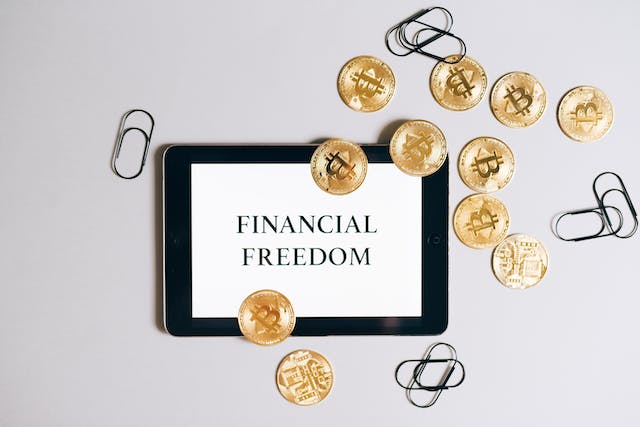In this exploration of the psychological landscape of cryptocurrency investment, we delve into the complex interplay of emotions, social influences, and behavioral biases that shape investor decisions in this rapidly evolving digital finance world. The emotional rollercoaster of crypto trading can be mitigated by leveraging automated tools like Immediate GPT Trading website for more balanced decision-making.
Psychological Drivers in Crypto Investment
In the realm of cryptocurrency investment, psychological factors play a critical role, often driving investor behavior in unique and sometimes unexpected ways. This section delves into these driving forces, exploring how the human psyche interacts with the volatile world of digital currency.
The first aspect to consider is the inherent thrill associated with the volatility of the crypto market. Unlike traditional markets, cryptocurrencies can exhibit dramatic price swings within very short periods. This volatility, while risky, creates an environment that can be exhilarating for investors. The rapid fluctuations in value provide opportunities for high returns, but they also demand a level of psychological resilience. Investors often find themselves riding a wave of emotions, from excitement during a market upswing to anxiety during downturns.
Another critical element is the presence of behavioral biases in crypto investment decisions. These biases are deeply rooted in human psychology and can significantly influence investment choices. For example, the confirmation bias leads investors to seek out information that supports their preexisting beliefs about a cryptocurrency, often ignoring contradictory evidence. Similarly, the overconfidence bias can cause investors to overestimate their knowledge and ability to predict market movements, leading to risky decisions.
Emotional Investment and Risk Perception in Cryptocurrency Trading
The world of cryptocurrency trading is not just a financial endeavor; it’s also an emotional journey. The section on “Emotional Investment and Risk Perception” examines how emotional responses to the market’s ups and downs significantly influence investment decisions in the volatile environment of cryptocurrencies.
Emotional investment in crypto trading often leads to a rollercoaster of feelings. Investors can experience a surge of excitement and optimism when the market is favorable, driving a sense of invincibility and potentially leading to riskier investments. On the flip side, during market downturns, feelings of anxiety and fear can dominate, prompting hasty decisions like selling off assets in a panic. These emotional responses are natural but can cloud judgment, leading to decisions that may not align with long-term investment strategies.
The perception of risk in cryptocurrency investments is equally influenced by emotions. Cryptocurrency markets are known for their unpredictability, and for many, this uncertainty translates into a heightened perception of risk. This perception is not just a matter of financial loss but also involves the fear of missing out (FOMO). FOMO can drive investors to make impulsive decisions, such as investing in a trending coin without thorough research, motivated by the fear of missing an opportunity rather than a calculated analysis of the risks and rewards.
Social Influence and the Shaping of Crypto Trends
The influence of social dynamics on cryptocurrency investment trends forms a complex web that shapes investor behavior and market movements. This section delves into how social factors, including the role of media, influencers, and communal sentiments, play a pivotal role in the cryptocurrency world.
Social media platforms have emerged as powerful drivers in the crypto market. They serve as both a source of information and a breeding ground for trends. Influential figures on these platforms can sway market perceptions with just a few words. A tweet or a social media post from a high-profile individual or a seasoned investor can trigger waves of reactions, leading to sudden spikes or drops in a particular cryptocurrency’s value. This phenomenon underscores the power of social influence, where the opinions and actions of a few can have a significant impact on the many.
Another aspect of social influence is the fear of missing out, or FOMO. This fear is especially pronounced in the crypto market, where tales of overnight riches can tempt investors to make hasty decisions. FOMO often leads to a bandwagon effect, where investors rush to buy certain cryptocurrencies not based on their intrinsic value or long-term potential, but simply because others are doing so. This herd mentality can inflate asset bubbles and exacerbate market volatility.
The ripple effects of social influence on crypto trends highlight the need for investors to critically evaluate the information they receive from social networks. While these platforms can provide valuable insights, they can also be sources of hype and misinformation. Navigating the crypto market successfully thus involves a discerning approach to social media, separating valuable information from noise and understanding the psychological underpinnings of social trends in cryptocurrency investment.
Conclusion
Our journey through the psychological dimensions of crypto investment reveals a nuanced tapestry of emotional responses, social dynamics, and cognitive biases. Understanding these elements is crucial for navigating the unpredictable yet fascinating terrain of cryptocurrency markets.

